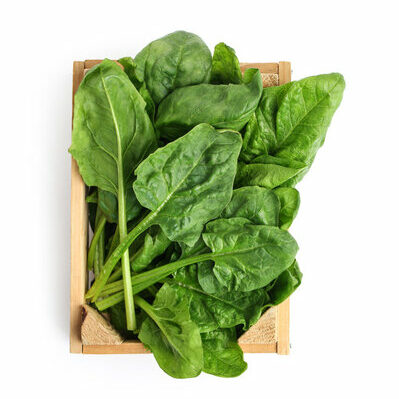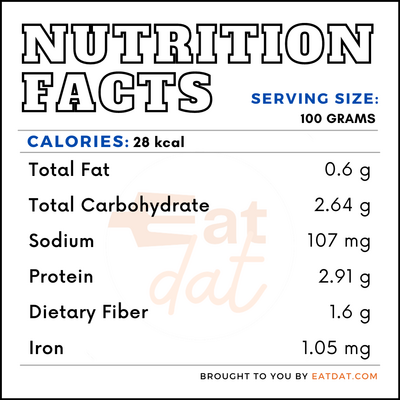
Spinach
What is Spinach?
Spinach is a leafy green plant belonging to the Amaranthaceae family. The leaves may be consumed raw or cooked. It is often used in preparing salads, soups, stir-fries, pastries, and can give color to pasta. Due to the presence of oxalic acid present, it has a dark deep green color and has a mild sweet taste with bitter undertones.
- When cooked, the bitterness is intensified.
- There are many different varieties of this leafy green.
Some other popular leafy green vegetables include:
- Watercress
- Mustard Greens
- Dandelion Greens
- Turnip Greens
- Beet Greens
- Bok Choy
- Microgreens
- Swiss Chard
- Arugula
- Collard Greens
Origin of spinach
This vegetable originated in Ancient Persia more than 2,000 years ago. From there, it made its way to India, Nepal, and China through trade around 647 AD. The Arabs and North Africans introduced the greens to Europe in the middle ages. This leafy green has a reputation for being a nutrient-dense food. In popular culture, the comic and cartoon Popeye the Sailor Man features a strong man who is able to beat up villains by eating a can of spinach.
Nutrition
Nutritional profile for spinach (100 g):

Spinach is rich in calcium, magnesium, phosphorus, potassium, sodium, iodine, vitamin C, folate, vitamin A, carotene, cryptoxanthin, and lutein + zeaxanthin. Additionally, this leafy green is rich in antioxidants, phytochemicals, and bioactives. Regular consumption of this vegetable may help in preventing oxidative damage, boosting the metabolism, reducing inflammation, and minimizing obesity. It may even protect against diseases such as diabetes and cancer. Also, this leafy green has been proven to improve blood circulation and prevent cardiovascular diseases and non-alcoholic liver diseases.
Commercial production
The main spinach producing country in the world is China, followed by the USA, Japan, Turkey, Indonesia, Iran, France, Pakistan, Italy, South Korea, and Belgium. This leafy green requires cool weather and thrives in sandy loam soils with good drainage. The harvesting for this requires the plant to be harvested in one cut. The main varieties grown are the Savoy (dark green), crinkly, and curly.
Spinach can remain fresh if stored in a sealed plastic bag in the refrigerator for up to two weeks. Leafy greens can also stay fresher longer if wrapped in a damp kitchen towel rather than stored in a plastic bag.
Spinach recipes
This is considered a superfood and is well-suited to a number of dishes from salads to stews, sandwiches to pastries. Here are a few recipes to try:
- Gomae
- Sigeumchi-namul
- Quiche
- Espinacas Con Garbanzos
- Spanakopita
- Palak Paneer
- Aloo Palak
- Nargesi
- Torshi Tareh
- Spanakorizo
- Kıymalı Ispanak
- Kangkong Tumis Terasi
- Creamed Spinach
- Crackling Spinach
FDA regulations
The FDA describes all fresh vegetables, including spinach, as raw agricultural commodities. The organization strictly regulates all aspects of its growing, harvesting, packing, and storage. The USDA regulates the grades of spinach leaves. Also, canned varieties are governed by the FDA, which specifies that it may be produced in whole leaf, cut or sliced, or chopped form.
References
Spinach Farming, Planting, Care, Harvesting Techniques, Agri Farming, https://www.agrifarming.in/spinach-farming-in-india
Roberts, Joseph L, and Régis Moreau. “Functional properties of spinach (Spinacia oleracea L.) phytochemicals and bioactives.” Food & function vol. 7,8 (2016): 3337-53. doi:10.1039/c6fo00051g, https://pubmed.ncbi.nlm.nih.gov/27353735/
Jovanovski, Elena et al. “Effect of Spinach, a High Dietary Nitrate Source, on Arterial Stiffness and Related Hemodynamic Measures: A Randomized, Controlled Trial in Healthy Adults.” Clinical nutrition research vol. 4,3 (2015): 160-7. doi:10.7762/cnr.2015.4.3.160, https://www.ncbi.nlm.nih.gov/pmc/articles/PMC4525132/
